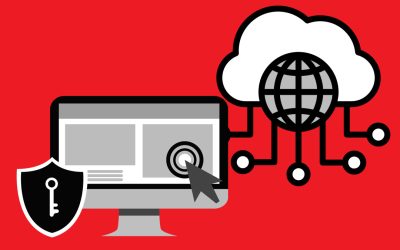In 2020, remote work became a norm for us to adapt to the pandemic. Companies had to move from a physical to a virtual workspace, relying on the cloud and applications such as Zoom or Skype to keep operations functioning. Many have adjusted to this new reality and seen the benefits from it.
There are four common ways that companies use to connect workers to the company’s network:
1. Provision corporate laptops with a VPN with Split Tunneling Enabled
This approach is popular with companies that have multiple endpoint solutions. Employees take a corporate laptop home and use a VPN gateway to connect to the company’s network, securing them with a relatively secure endpoint that does not need a new management stack. However, this is far from perfect. Companies still need to supply and maintain all the devices, creating limits on what the user can or cannot do. This can affect user productivity since they are not able to access sites and applications that they might need, making it hard for the IT team to process all the requests. There’s also the issue of security. Since traffic through the split tunnel won’t go through security control, there is a chance that a corporate device is exposed to security threats.
2. Provision VDI or DaaS
On paper, a Virtual Desktop Infrastructure (VDI) or Desktop as a Service (DaaS) is an easy way to connect employees to the corporate networks from home. It just requires them to connect to a VDI to be able to access the corporate network. However, it’s not as easy as it seems since companies still need to provide significant storage, network, and compute resources. For short-term use, it can be beneficial but for long-term, it’s not ideal since costs are high. Also, users with low bandwidth or who are working offline will suffer greatly, which will affect productivity altogether.
3. VPN on an Unmanaged Device
This is an easy approach— ask your employees to get a machine with certain specifications and have them use a VPN to access the corporate network. It’s affordable and easy but security and privacy are jeopardized. With increase complex malware being distributed around the web, there is a high risk for a breach to happen in an unmanaged device.
4. Zero Trust
Zero Trust is a security model that is centered on the belief that organizations should not automatically trust anything inside or outside their perimeters. Everything should be verified first before they can access the system. It is a more secure approach to operating in a virtual workspace. It controls access to companies’ applications or networks, creating a safer environment for employees to work in. However, it doesn’t protect against endpoint infections. Attackers can compromise an endpoint and use that to authenticate access to a company’s resources and network. Even with Zero Trust, companies still need VPN or legacy non-Zero Trust access for some applications.
How Hysolate can help
Virtual workspaces are here to stay but the traditional approaches are outdated, expensive, and inconvenient. That’s why our partner Hysolate has built a new approach: Isolated Workspace-as-a-Service.
This isolated workspace is a hyper-isolated virtual environment installed in a user’s endpoint to provide an easier, better, and safer experience of working from home. It is built to run in any Windows 10 OS and managed, at scale, from the cloud. This system allows you to run applications locally, eliminating cloud costs and solving UX issues for VDI and DaaS. Remote work is here to stay and Hysolate makes it easier and safer for you and you company.
——
References:
Kollmann, Alon. “From Physical to Virtual Workspaces.” Hysolate, 1 Mar. 2021, www.hysolate.com/blog/from-physical-to-virtual-workspaces.
Henley, Dede. “Working From Home Is Here To Stay (For The Better).” Forbes, 20 June 2021, www.forbes.com/sites/dedehenley/2021/06/20/working-from-home-is-here-to-stay-for-the-better/?sh=43ae0e156d5b.
Pratt, Mary. “What Is Zero Trust? A Model for More Effective Security.” CSO Online, 16 Jan. 2018, www.csoonline.com/article/3247848/what-is-zero-trust-a-model-for-more-effective-security.html.



